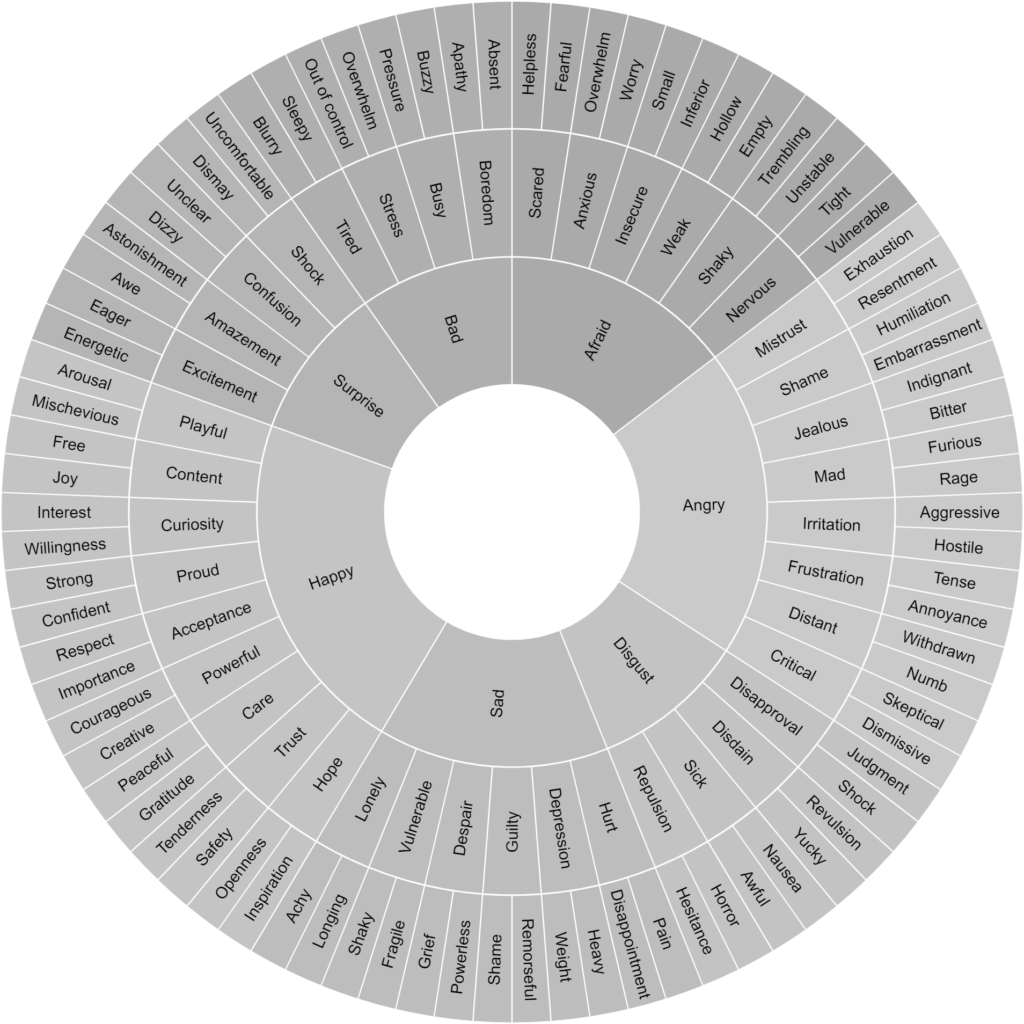Activity: Keep A Mood Journal
When you look at your emotions over time, it can help you see how your general outlook is.
How to keep a mood journal
Try this exercise for 30 days!
Each day, just write down one word that describes your main feeling. This should only take you a minute or so.
For example, you might use words like “happy”, “contented”, “anxious”, “worried”, “sad”, or “tired”. There’s no right and wrong way to do this. Just choose the word that feels closest to your mood at the time.
Top tip: Use the emotion wheel
Struggling for words? Sometimes it's not easy to describe your emotions. Take a look at this emotion wheel to see which word best describes your main mood that day.

After 30 days, look back and see if you can spot any interesting patterns. It can give you a better understanding of your emotions as a whole.
Name that feeling
Sometimes we can act in ways we regret because we don't know how to express our emotions any other way.
Learning how to name your feelings in words is very powerful. Sometimes, just telling someone what you're really feeling - or writing it down - can take some of the power out of that difficult emotion. Your mood journal can help with that.
About the emotion wheel
Dr. Wong's emotion wheel, pictured is an adapation of Mike Bostock’s adapation of Geoffrey Roberts’s Emotion Wheel using D3’s partition layout. Robert’s 2015 work may be based on a vocabulary wheel by Kaitlin Robbs from 2014, which in turn appears to be based on The Feeling Wheel published by Gloria Willcox in 1982. People have been working on emotion wheels for decades, because they are so useful.
